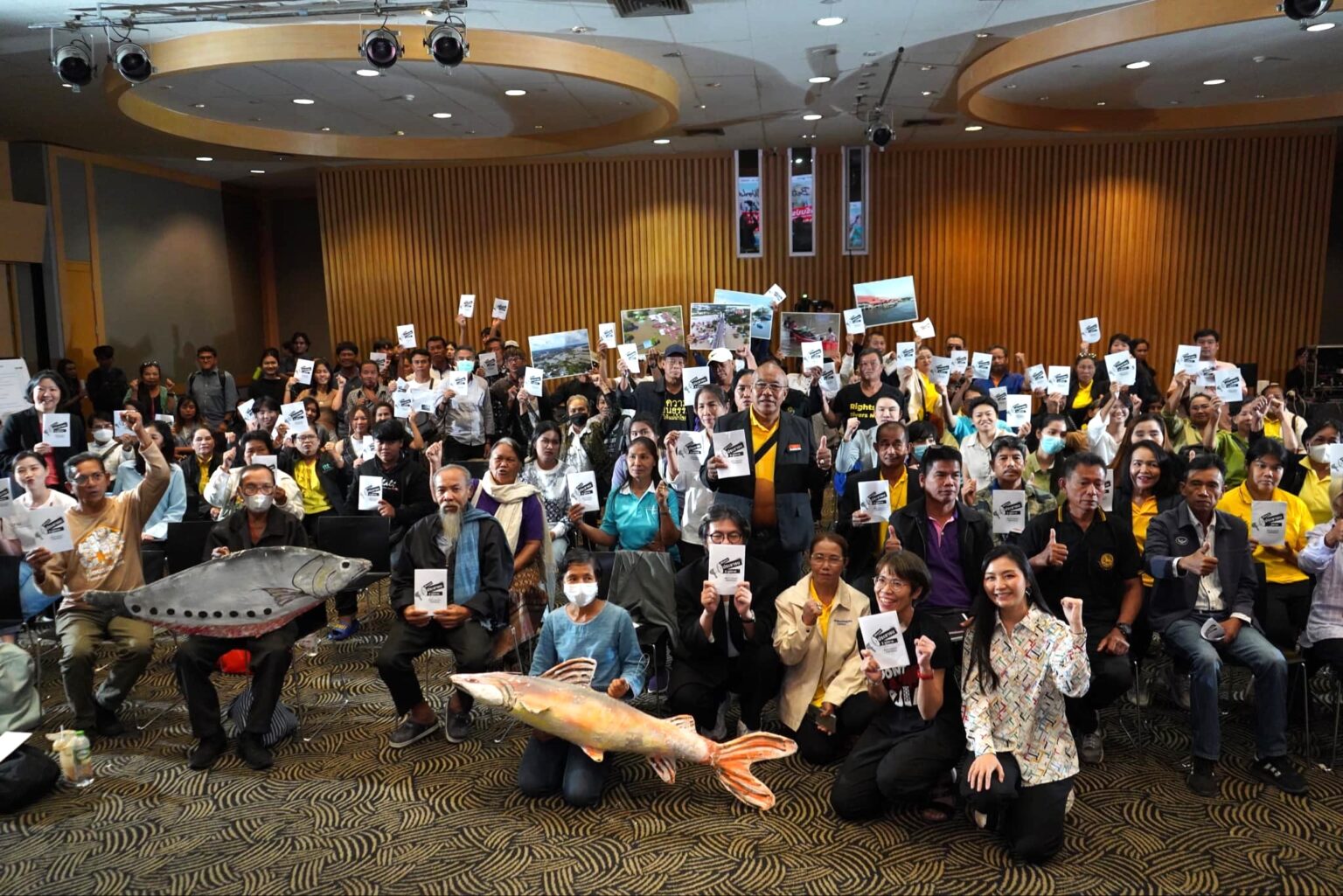By Rin Sohsai and Tanya Lee Roberts-Davis. Originally published in the Bangkok Tribune. Opinion piece highlights are below.
In the coming months, Thailand’s updated draft Power Development Plan (PDP 2024-2037) is due to be submitted to the Cabinet for approval. This master plan underwent limited online public hearings in mid-June. Yet to date, the text along with information about the assumptions, analysis and calculations underpinning the draft PDP has not been published, write Rin Sohsai and Tanya Lee Roberts-Davis of the International Rivers
Decisions about energy planning impact the electricity rates we pay, the types and locations of power plants, and the future of millions who will live near power plants. Given such widespread implications, it is in all of our interests to have a meaningful say in the PDP 2024.
The stakes are even higher in the midst of the climate crisis, with the shift away from power systems that destroy our health and planetary commons more urgent than ever. Despite the critical need to pivot towards prioritizing our collective social, environmental, cultural and economic well-being, PDP 2024 seems set to take us on an opposite pathway.
That’s why civil society groups from across Thailand joined together in July to present a unified set of recommendations to the Energy Policy and Planning Office, at the Ministry of Energy. Civil society recommended expanding consultations, publicly disclosing information about the PDP in an accessible manner, and ensuring civil society and community representation in the committee that will finalize the PDP. In addition, the civil society joint position points to the need for a revised PDP, which integrates environmental and health impact assessments and prioritizes decentralized options harnessing the power of the sun and wind.
According to its stated goals, PDP 2024 is supposed to be designed to help Thailand shift towards a cleaner and more affordable energy future. Yet, a significant portion of ‘clean’ energy will be sourced from hydropower projects in neighboring countries, especially Laos.
Currently, Thailand imports nearly 6,000 MW from Laos, primarily from hydropower and coal (Hongsa Lignite). The PDP 2024 plans to increase imports by 3,500 MW, sourced from at least three new hydropower dams. According to research findings published in a recent briefing by the Climate Finance Network Thailand, these dams will not only be environmentally and socially destructive, but the electricity will be more expensive than scaling up renewable energy options. For example, the negotiated contractual price of energy from the Pak Beng Dam on the Mekong mainstream stands at 2.92 baht per Kilowatt-hour; while power generated by solar with battery storage has a cost of 2.8 baht per Kilowatt-hour.
As the realities of climate change become ever clearer, so too does the evidence that hydropower dams are neither climate resilient nor free from the harms, losses and damages often associated with fossil fuel projects. Damming a river requires mining and fossil fuels for construction, and takes years – sometimes more than a decade – to build.
Once built, hydropower projects are also associated with potent greenhouse gas emissions both from the reservoir site and turbine degassing. In combination with the extensive social and ecological consequences that can cross national borders, utility-scale hydropower is clearly not clean or green. Dams are also vulnerable in the face of climate change – becoming non-functional when water levels are too low due to drought conditions, or risking overtopping and leading to exacerbated flooding during times of unprecedented rainfall.
We have already witnessed the devastating consequences six years ago, when an auxiliary dam of the Xe Pian-Xe Namnoy Hydropower Project in southern Laos cracked and overflowed during a time of heavy rain, leaving 49 people dead, 22 missing and thousands displaced, destroying homes, property and farmlands. The floodwaters extended far downstream and across the border into Cambodia, affecting an estimated 15,000 people. Now the dam is operational, supplying electricity to Thailand.
Meanwhile, the negative consequences of the Xayaburi Dam – which has been operating for five years – have been widely reported, including declining fish populations, abnormal fluctuations in water levels, and a lack of sediments being carried downstream that would otherwise provide fertile grounds for subsistence farming along the riverbanks.
The draft PDP’s prescription of more hydropower dams, new fossil gas power projects, additional waste-to-energy incinerators and even nuclear power facilities brings far too many social, environmental and safety risks. Instead, more economical, simpler and less socially and ecologically disruptive alternatives exist; Installation of rooftop and decentralized stacked solar panel systems that cater to our different household and community needs, along with corresponding adjustments for updating our power transmission and distribution systems.
Opening up power planning to publicly accountable, participatory processes could lead us in an altogether different direction than what’s in store if the draft PDP 2024 is not fundamentally changed – one where energy is a public good, affordable to all, where employment brought by the sector is dignified, and where the consequences no longer undermine our wellbeing or that of the ecosystems our survival depends upon.
Featured Photo: The recent gathering of energy advocates and activists to propose recommendations on the new PDP to the new government and the public. Credit: International Rivers

